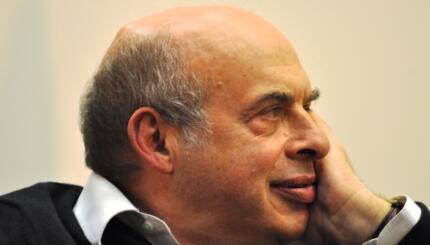I was in North Mississippi, visiting my husband’s family for the first time over Thanksgiving when I first heard about “the blind.” Being Jewish and from the North I had never heard this term, but after lunch we drove through the eerily empty and beautiful delta fields out to his father’s duck blind. It was a camouflaged hideout, made to fit eight people and two dogs. They had flooded the field to attract ducks flying south for winter and filled the water with elaborate decoys that, with a flip of a switch flapped their wings, signaling to ducks flying overhead that this was a safe place to land. When I asked about the small camp stove, I learned that the space served more as a clubhouse on early weekend mornings than a place for serious hunting.
I was reminded of that blind when I first spotted this beautifully crafted decoy in our museum collection. Created as a commemorative piece, it’s not bound for the flooded fields, but lives in our collection instead, as a symbol of both Jewish and Southern heritage.
Carved wood from Temple Anshe Chesed in Vicksburg
This duck comes from a synagogue in Vicksburg, Mississippi. Vickburg’s Anshe Chesed dedicated their first house of worship in 1870. Like all great southern celebrations, the program began with a parade from the B’nai B’rith hall to the new temple, led by a police escort and Jaeger’s Brass Band from New Orleans. The congregation spent over 100 years in the building until the late 1960s, when they decided to move out of downtown and build a smaller temple. Their original building was torn down.
“Made of Wood from Mississippi’s first synagogue built after the Civil War. It was Dedicated Temple Anshe Chesed May 16, 1868 and was located at 1209 Cherry Street, Vicksburg
Gift from Benji L and Betty Lee Grundfest Lamensdorf”
Before the old synagogue came down, though, congregants wanted keep something to remember it by. I can’t imagine a more perfect way to honor an important southern institution than to manifest it in this traditional art form.
Congregants Benji and Betty Lee Grundfest Lamensdorf had a set of these wonderful decoys carved from the wood remnants of the temple, and one of them made its way into our collection. They serve as a reminder of what Jewish life once was, and still is in Vicksburg. The congregation, now over 160 years old, has shrunk significantly, but they still hold lay-led services and social gathering on most Shabbats. You might say these birds of a feather have done a great job sticking together, and we hope they continue to do so for many more Shabbats to come.



